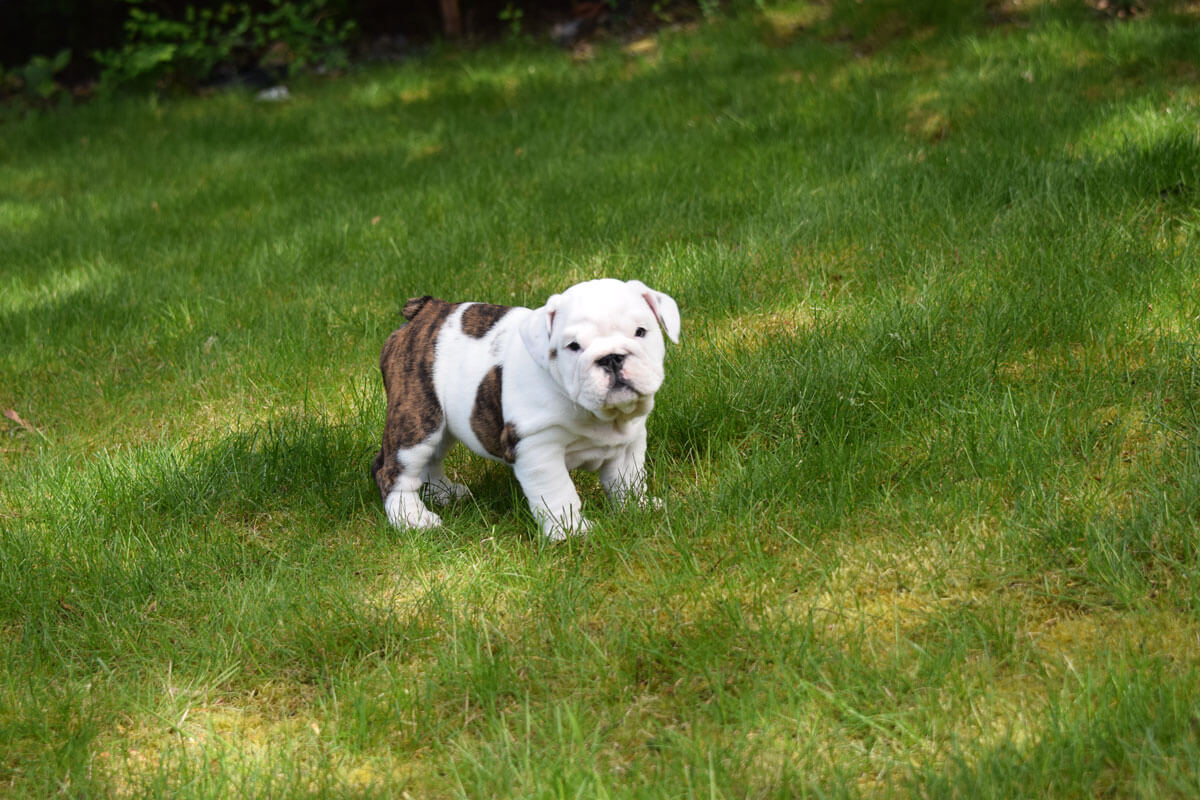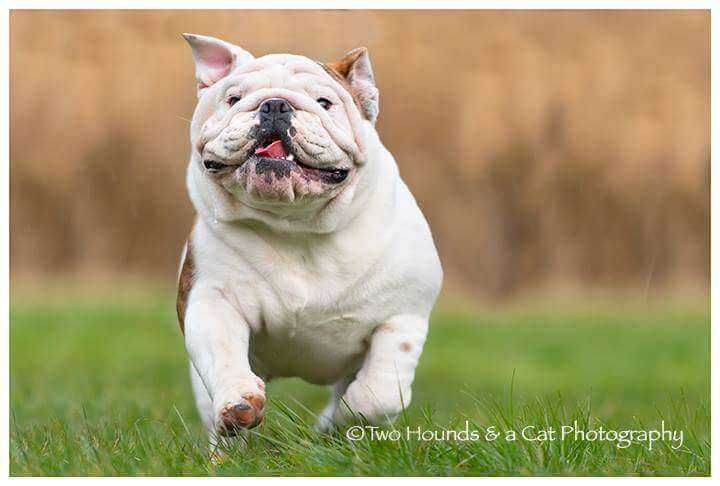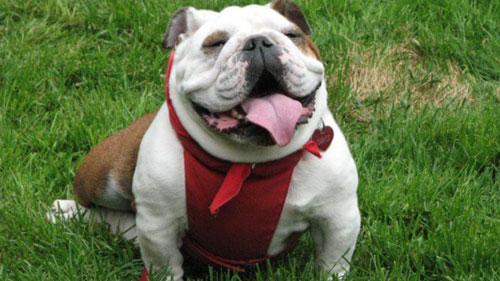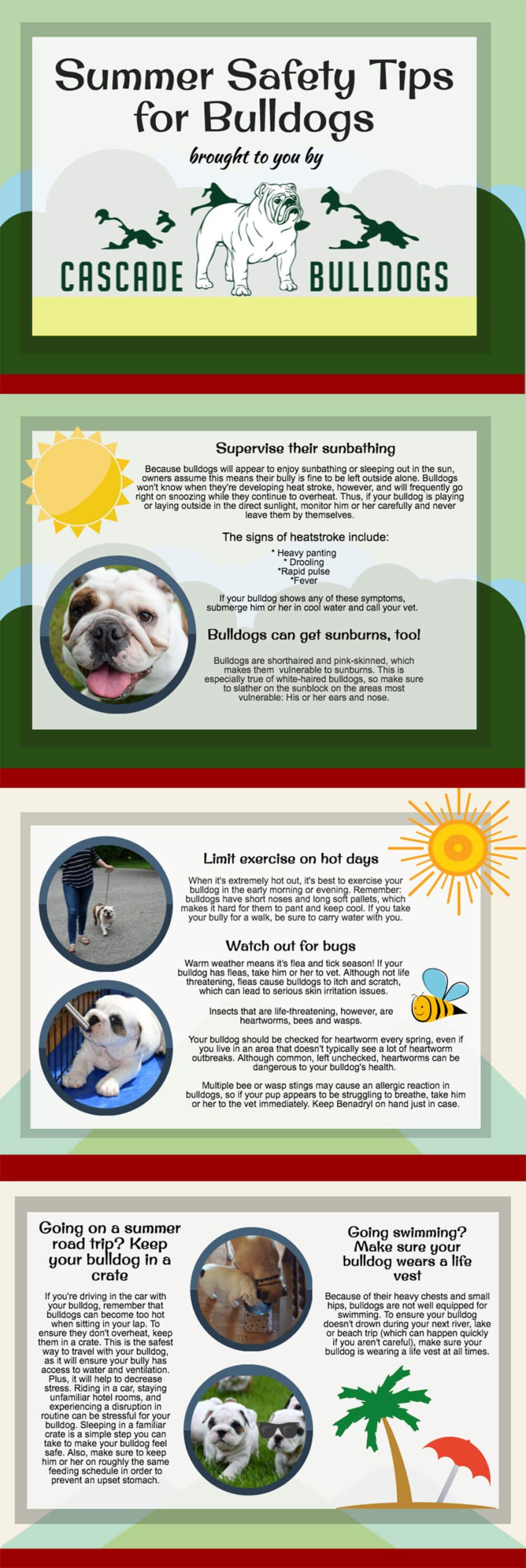
It might be common for pet owners to feed their dogs table scraps, but that doesn’t mean it’s a good idea. While people food may not immediately hurt your bulldog, it can be bad for their health in the long run.
Some examples of unhealthy (but not lethal) foods are:
- Fatty foods – Fatty foods like bacon, fried chicken, or hot dogs can result in your bulldog becoming overweight or developing inflammation in the pancreas.
- Dairy products – Bulldogs lack the necessary enzyme, lactase, to properly digest lactose, the sugar found in milk and other dairy items. This can lead to gastrointestinal upset, including symptoms like diarrhea, bloating, and gas. Additionally, consuming dairy can exacerbate skin issues in bulldogs, as some may develop allergies or sensitivities to the proteins found in milk.
While dairy products might make your bulldog uncomfortable, some people foods, like chocolate or alcohol, could kill them. The items listed below should be never be given to your bulldog.
The Full List of What Not to Feed a Bulldog:
- Alcohol
- Chocolate
- Caffeine
- Fruit seeds (apples peach, apricot)
- Garlic
- Onions & onion powder
- Hops (used in home beer brewing)
- Macadamia nuts
- Moldy foods
- Wild and yard mushrooms
- Mustard seeds
- Nutmeg
- Tobacco
- Pits from apricots, cherries or
peaches - Plums, raisins & grapes
- Potato leaves, stems (green parts)
- Rhubarb leaves
- Tomato leaves, stem (green parts)
- Walnuts
- Yeast dough
- Persimmons
Source: Bulldog Club of America
Why certain foods are dangerous for bulldogs
Chocolate
Chocolate contains theobromine, a substance that all dogs–Bulldogs included–can’t metabolize properly. Even a small amount can lead to symptoms like vomiting, diarrhea, seizures, and in extreme cases, death. Keep all chocolate, especially dark chocolate, well out of reach of your bulldog.
Onions and Garlic
Both onions and garlic (in any form—raw, cooked, or powdered) can be toxic to bulldogs. These foods contain compounds called thiosulfates, which can damage red blood cells and lead to anemia. Symptoms of poisoning may include lethargy, weakness, and difficulty breathing. It’s best to avoid any foods with onion or garlic in them, including certain human foods like soups, sauces, and spice blends.
Grapes and Raisins
Although the exact reason why grapes and raisins are toxic to dogs is unknown, they can cause kidney failure in some bulldogs. Even a small amount can be dangerous, so it’s best to avoid feeding them any grapes or raisins—whether fresh or dried. If you suspect your bulldog has ingested these, contact your vet immediately.
Alcohol
Never feed your bulldog any alcohol, as even small amounts can be extremely dangerous. Alcohol can cause vomiting, diarrhea, decreased coordination, central nervous system depression, and, in severe cases, respiratory failure or coma. Bulldogs’ smaller size makes them even more susceptible to the effects of alcohol, so always keep drinks out of their reach.
Xylitol (Artificial Sweetener)
Xylitol is a sugar substitute often found in sugar-free gum, candy, and some baked goods. While it’s safe for humans, it’s extremely toxic to dogs. In bulldogs, even small amounts of xylitol can cause a sudden drop in blood sugar (hypoglycemia), leading to seizures, liver failure, and even death. Always check food labels for xylitol and keep it away from your bulldog.
Cooked Bones
While it might seem like a treat, cooked bones (especially those from chicken, turkey, or other poultry) are dangerous for Bulldogs. When cooked, bones become brittle and can splinter easily, posing a choking hazard or causing internal injuries. Always stick to safe chew toys designed for Bulldogs instead of giving them real bones.
Avocados
While avocados are healthy for humans, they contain a substance called persin that can be toxic to dogs, including bulldogs. Eating avocados can cause vomiting and diarrhea, and the pits pose a choking hazard. It’s best to keep avocados off your bulldog’s menu entirely.
Caffeine
Just like alcohol, caffeine is dangerous for bulldogs. Found in coffee, tea, energy drinks, and some sodas, caffeine can cause restlessness, rapid breathing, heart palpitations, and muscle tremors. In large amounts, caffeine can even lead to seizures. Keep all caffeinated beverages away from your bulldog.
Wish to learn more about how to keep your bulldog healthy?
Check out:
- How to Tell If Your Bulldog Is Overheating
- How to Care for a Pregnant Bulldog
- Common Bulldog Health Problems and How to Treat Them
About Cascade Bulldogs: Cascade Bulldogs is a website dedicated to informing bulldog owners on how to raise, train and show bulldogs (also commonly referred to as “English bulldogs”).
Follow Cascade Bulldogs on Facebook and Instagram for weekly updates, cute photos and inspirational bulldog quotes.










